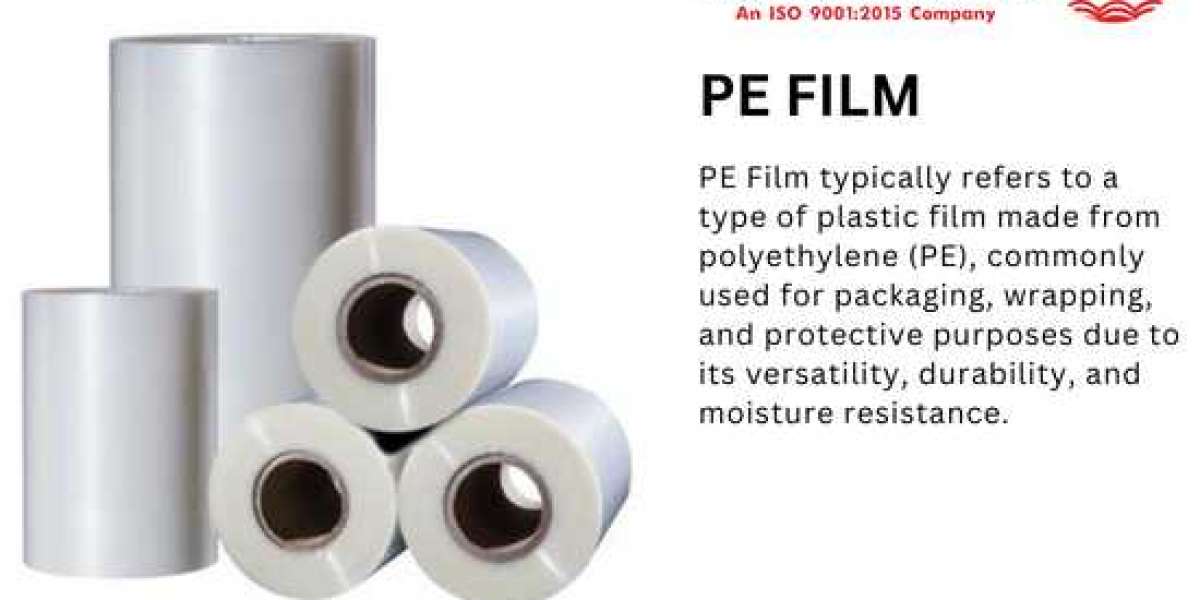Poly Film Manufacturers in India, short for Polyethylene film, is a versatile material with a wide range of applications across various industries. From packaging to construction, PE film plays a crucial role in protecting, preserving, and enhancing products and structures. In this article, we delve into the world of PE film, exploring its properties, uses, and frequently asked questions to provide you with a comprehensive understanding.
What is a PE Film?
PE film is a type of plastic film made from polyethylene, a thermoplastic polymer derived from ethylene gas. It is one of the most widely produced plastics in the world due to its versatility, durability, and cost-effectiveness. PE film can be manufactured in various forms, including high-density polyethylene (HDPE), low-density polyethylene (LDPE), and linear low-density polyethylene (LLDPE), each offering distinct properties suitable for different applications.
Properties of PE Film
Flexibility: Polyethylene Film Manufacturer Gujarat is highly flexible, making it easy to manipulate and shape according to specific packaging or covering needs.
Strength: Despite its thinness, PE film exhibits remarkable strength and tear resistance, ensuring the protection of enclosed products.
Chemical Resistance: PE film is resistant to many chemicals, making it suitable for packaging products that require protection from moisture, gases, or other environmental factors.
Transparency: Depending on the manufacturing process, PE film can be transparent or opaque, allowing for visibility of packaged products or providing privacy as needed.
Recyclability: PE film is recyclable, contributing to sustainable packaging solutions and reducing environmental impact when disposed of properly.
Applications of PE Film
Packaging: Polyethylene Film Manufacturers Ahmedabad is extensively used in packaging applications across industries such as food and beverage, pharmaceuticals, and consumer goods. It provides a protective barrier against moisture, dust, and contaminants, ensuring the integrity and freshness of packaged products.
Agriculture: In agriculture, PE film is used as mulch film, greenhouse covering, and crop protection film. It helps regulate soil temperature, conserve moisture, and prevent weed growth, enhancing crop yield and quality.
Construction: PE film is employed in construction as vapor barriers, protective covers, and insulation membranes. It safeguards structures from moisture infiltration, acts as a barrier against gases, and provides temporary weather protection during construction activities.
Medical: In the medical field, PE film is utilized in the manufacturing of disposable medical devices, sterile packaging, and protective barriers. Its inert nature and barrier properties make it ideal for maintaining sterility and preventing contamination.
Industrial: PE film finds applications in various industrial processes such as lamination, surface protection, and insulation. It serves as a versatile material for protecting surfaces from scratches, abrasions, and corrosion during handling, storage, or transportation.
Conclusion
PE film is a versatile and indispensable material with widespread applications across industries. Its unique properties, including flexibility, strength, and chemical resistance, make it an ideal choice for packaging, agriculture, construction, medical, and industrial applications. By understanding the properties, uses, and environmental considerations associated with PE film, businesses and consumers can make informed decisions to optimize its benefits while minimizing environmental impact.
Frequently Asked Questions about PE Film
Q: Is PE film safe for food packaging?
A: Yes, PE film is considered safe for food packaging as it is non-toxic, odorless, and compliant with food safety regulations. However, it is essential to use food-grade PE film specifically designed for such applications.
Q: Can PE film be recycled?
A: Yes, PE film is recyclable, but the recycling process may vary depending on local recycling facilities and regulations. It is crucial to separate PE film from other materials and ensure it is clean and free from contaminants before recycling.
Q: What are the environmental impacts of PE film?
A: While PE film is recyclable, improper disposal can contribute to environmental pollution. It is essential to promote responsible disposal practices and explore sustainable alternatives to minimize environmental impact.
Q: What is the difference between HDPE, LDPE, and LLDPE film?
A: HDPE (High-Density Polyethylene) film is stiffer and more puncture-resistant, suitable for applications requiring higher strength and durability. LDPE (Low-Density Polyethylene) film is more flexible and has better clarity, commonly used for packaging applications. LLDPE (Linear Low-Density Polyethylene) film offers a balance of strength, flexibility, and puncture resistance, making it suitable for various packaging and industrial applications.
Q: Can PE film be used for outdoor applications?
A: Yes, PE film can be used for outdoor applications, but its durability and weather resistance depend on the specific formulation and additives used during manufacturing. UV stabilizers may be incorporated to enhance resistance to UV degradation and prolong outdoor performance



